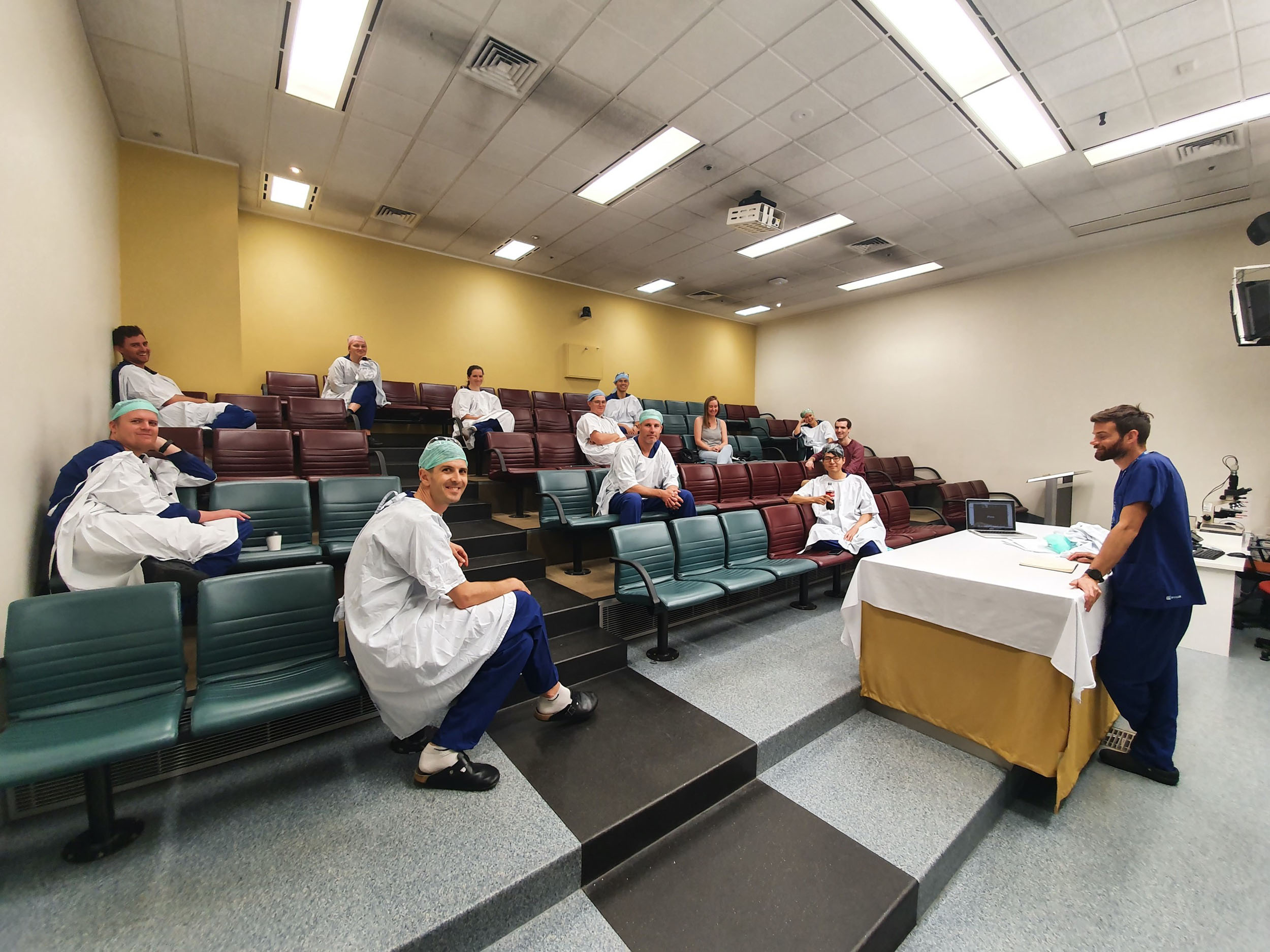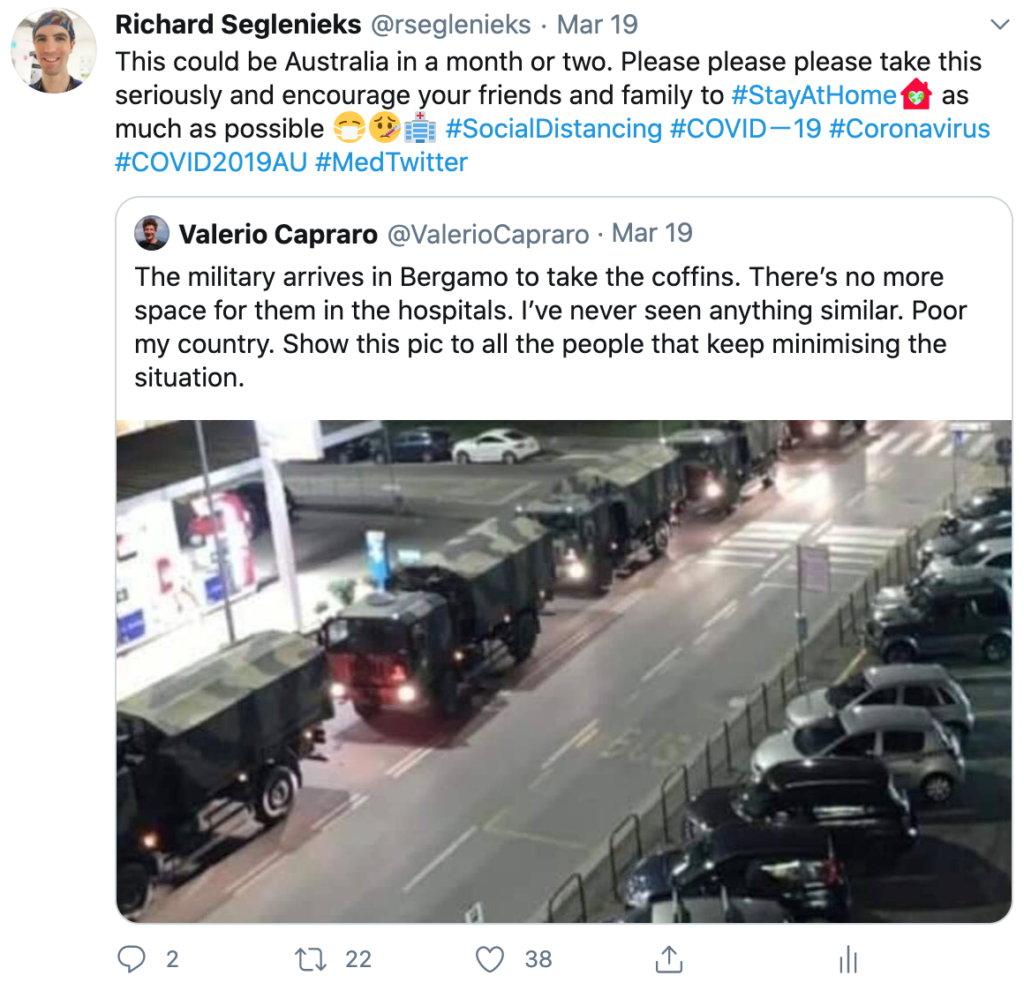Dr Richard Seglenieks is an Anaesthetic Registrar at St. Vincent’s Hospital Melbourne. Here, he records his reflections on the ‘strange times’ we’re living and working in during 2020.
We are living in strange times. It feels entirely inadequate, yet also unnecessarily obvious, to describe the current times as ‘strange’ – yet they undeniably are. For many of us, particularly of younger generations, these are the strangest times we have ever experienced.
It feels strange to be desensitised to words that may have once shocked us – pandemic, unprecedented, quarantine, isolation. I’m already tired of hearing endless opinions on what our ‘new normal’ will look like once the pandemic settles down, though I realise it’s an important topic to consider. We can’t even accurately predict what the situation will be like in one or two months, let alone six or twelve, so it seems a somewhat futile exercise right now. It’s entirely possible that things will get worse before they really get better and our ultimate trajectory depends on so many factors, particularly development of a vaccine.
It’s hard to describe what it has felt like to be an anaesthetic trainee in such strange times. I’ve found it to be mostly an odd mix of anxiety, boredom, uncertainty and listlessness (quite literally, being without a theatre list many days). While we inevitably all have different experiences, there are certain common threads wound through our stories.
I find I’ve been most aware of the overwhelming uncertainty. Given the entirely appropriate limitations imposed by our governments on travel and gatherings, examinations are in limbo (with primary and final written papers completed for the first sitting but vivas postponed from May to October, and medical vivas cancelled). Volumes of practice across most specialties have been significantly reduced, creating uncertainty around the quality of our clinical experience during this time. Movement between some hospitals has been delayed, altering the exposure for a number of trainees to certain fields, particularly paediatrics and obstetrics. Some anaesthetic trainees have been redeployed to ICU, though this may have occurred prematurely in hindsight. For a range of reasons, mostly completely out of their control, a handful of trainees will likely have their training progression delayed.
Hospitals and health services were mostly reasonably quick to act. We drastically reduced our elective surgical caseload, focusing only on emergent, urgent and time-sensitive cases; we stockpiled personal protective equipment and have been running regular drills to practice the correct processes for donning and doffing to avoid contamination; we ordered extra ventilators and modelled how far we could stretch our hospitals’ capacity for patients requiring intensive care; we developed new systems to potentially manage large numbers of high-risk intubations and to compensate for the possibility of many staff being unable to work simultaneously due to illness or isolation requirements. Our departmental meetings and teaching sessions rapidly transitioned to teleconferencing platforms, bringing new challenges but also new opportunities and improving ease of access.

Social distancing in the early days of the pandemic, before transitioning to teleconferencing.
Dr Nicholas Barton, Dr Jessica Kay, Dr Heidi Graham, Dr David Choi, Dr Alex Morris, Dr Andrew Woodhead, Dr Richard Seglenieks, Dr Victor Hui, Dr William Watson, Dr Emma Paxton, Dr Stuart McNamara, Dr Asha d’Arville.
Perhaps one of the most interesting aspects of the situation is how rapidly guidelines and protocols have been developed and updated. As the world went from zero to uncontrolled pandemic in a few short months, hospitals (outside of Australia & New Zealand) were inundated with critically unwell patients suffering from a novel disease, for which treatment could initially only be extrapolated, such as from other severe coronavirus infections (e.g. SARS-CoV-1) and ARDS. As new data and anecdotes poured in daily, guidance on best practice shifted rapidly. This highlighted the relative strengths and limitations of various avenues to disseminate information – from peer-reviewed scientific journal publications to webinars to social media.
Impacts outside of work are highly variable. While few of us will have been personally affected by illness or death related to COVID-19 thus far, many of our friends and relatives have lost their jobs or had their work drastically reduced or altered due to the restrictions. This has not only financial effects, but also impacts on physical and mental health.
Age is a strong predictor of mortality with COVID-19 – so we worry about our parents and grandparents, our elderly neighbours, and our older colleagues. Children seem to rarely suffer severe illness, however, they may act as vectors of infection – so most students have had to learn how to learn via distance education. This has also posed new challenges for parents.
Many restrictions are now starting to be relaxed in light of their success (or luck) and their devastating impacts – much of which may be yet to fully manifest. The economy has been particularly hard hit. Millions have lost their jobs, many businesses are struggling, entire industries have been decimated. Experts disagree over how rapidly we can recover, though there seems to be little disagreement that the greatest economic burden will be borne by younger generations. Perhaps not directly by us as anaesthetic trainees, but by our partners, our siblings and our friends.
With all that has and has not happened, we are now unsure what to expect in the short-, medium- or long-term. It seems inevitable that case numbers will rise as restrictions ease. We can only hope that continued good fortune and strong public health responses will keep the infection curve flat enough to avoid overwhelming our healthcare system and that an effective vaccine is developed soon.

New data and anecdotes poured in daily, clearly displaying what could happen in Australia and New Zealand.
